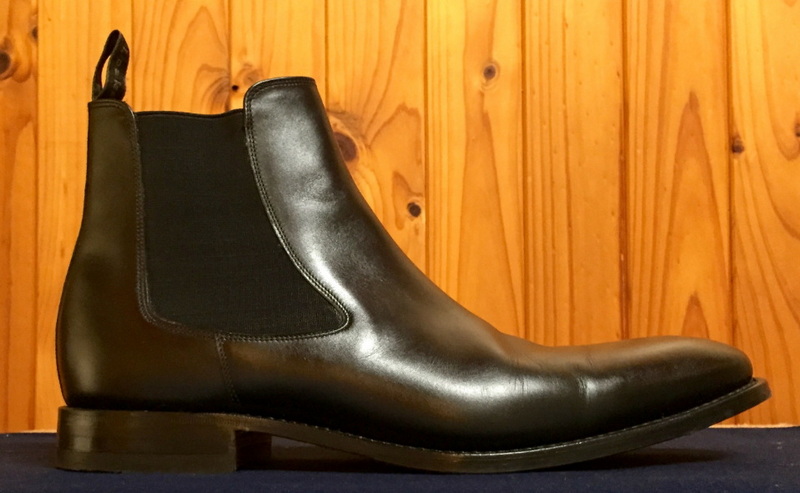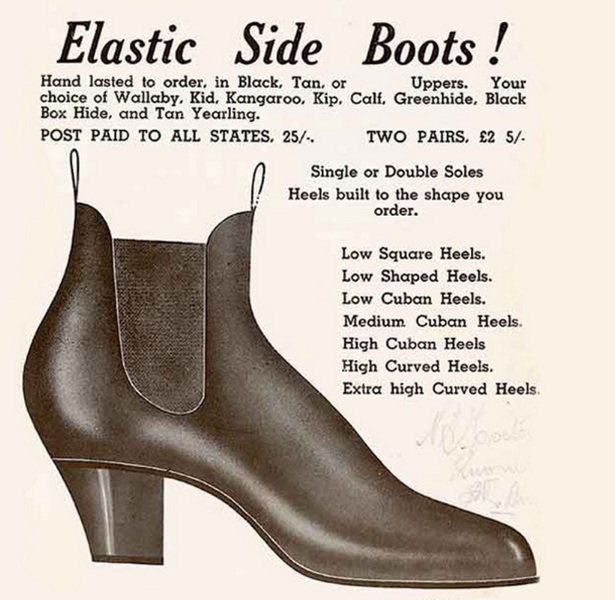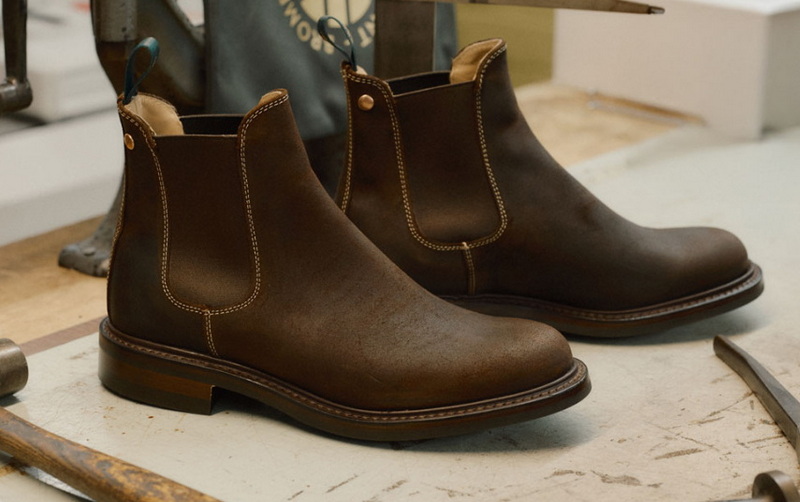Content Menu
● Understanding Chelsea Boots
● Why Stretch Chelsea Boots?
● Methods to Stretch Chelsea Boots
>> 1. Wear Thick Socks
>> 2. Use a Boot Stretcher
>> 3. Heat Method
>> 4. Freeze Method
>> 5. Leather Stretching Spray
>> 6. Professional Cobbler
● Additional Techniques for Stretching Chelsea Boots
>> 7. Stuffing Your Boots
>> 8. Soaking Method
● Tips for Maintaining Comfort
● The History of Chelsea Boots
● Different Styles of Chelsea Boots
● Care Tips Specific To Different Materials
>> For Leather:
>> For Suede:
● Common Mistakes When Buying or Wearing Chelsea Boots
● Style Guide: Pairing Chelsea Boots With Outfits
● Conclusion
● FAQ
>> 1. How long does it take to stretch Chelsea boots?
>> 2. Can I use heat on suede Chelsea boots?
>> 3. What if my Chelsea boots still feel tight after stretching?
>> 4. Is it safe to freeze my Chelsea boots?
>> 5. Can I use regular shoe spray instead of leather stretching spray?
● Citations:
Chelsea boots are a timeless fashion staple, known for their sleek design and versatility. However, they can sometimes fit too snugly, leading to discomfort. Fortunately, there are several effective methods to stretch out Chelsea boots, ensuring they fit comfortably without compromising their style. This comprehensive guide will explore various techniques, tools, and tips to help you achieve the perfect fit for your Chelsea boots.

Understanding Chelsea Boots
Chelsea boots originated in the Victorian era and have remained popular due to their ease of wear and stylish appearance. Characterized by their ankle-high design and elastic side panels, they can be made from various materials, including leather and suede. While these materials are durable, they can also be rigid when new, making stretching essential for comfort.
Why Stretch Chelsea Boots?
- Comfort: A proper fit prevents blisters and discomfort during wear.
- Longevity: Stretching helps maintain the boot's shape and integrity.
- Versatility: A better fit allows for pairing with different outfits.
Methods to Stretch Chelsea Boots
Here are several methods to effectively stretch your Chelsea boots:
1. Wear Thick Socks
One of the simplest methods is to wear thick socks while breaking in your boots. This method allows the leather to gradually stretch as you walk around.
- Steps:
1. Put on a pair of thick socks.
2. Wear your Chelsea boots indoors for a few hours each day.
3. Repeat until you feel a comfortable fit.
2. Use a Boot Stretcher
A boot stretcher is a handy tool designed specifically for this purpose. It can stretch both the length and width of your boots.
- Steps:
1. Insert the boot stretcher into your Chelsea boots.
2. Adjust it according to the tight areas (some stretchers come with knobs for targeted stretching).
3. Leave it in place for at least 24 hours.
4. Check the fit and repeat if necessary.
3. Heat Method
Applying heat can help soften the leather, making it more pliable.
- Steps:
1. Put on thick socks and wear your boots.
2. Use a hairdryer on low heat, focusing on tight areas for about 30 seconds.
3. Walk around while the leather is warm to help it mold to your foot shape.
4. Freeze Method
This unconventional method uses water's expansion when frozen to stretch your boots.
- Steps:
1. Fill two ziplock bags with water and seal them tightly.
2. Place the bags inside your Chelsea boots.
3. Put the boots in the freezer overnight.
4. Once frozen, remove the bags and let the boots thaw before wearing them.
5. Leather Stretching Spray
Specialized leather stretching sprays can help soften the material before stretching.
- Steps:
1. Spray the inside of your Chelsea boots lightly with the stretching spray.
2. Wear them with thick socks until they dry.
6. Professional Cobbler
If DIY methods don't yield satisfactory results, consider visiting a professional cobbler who can stretch your boots without damaging them.

Additional Techniques for Stretching Chelsea Boots
Beyond these primary methods, there are other techniques you can employ to ensure your Chelsea boots fit comfortably:
7. Stuffing Your Boots
You can fill your Chelsea boots with materials such as rolled-up towels or old newspapers to gently stretch them while they're not being worn.
- Steps:
- Roll up towels or use crumpled newspaper.
- Stuff them into your boots until they are snug but not overly tight.
This method works gradually over time but can be effective in maintaining shape when not in use.
8. Soaking Method
Soaking is another method that involves dampening the leather before wearing it.
- Steps:
- Fill a basin with lukewarm water and submerge your Chelsea boots for about 15-20 minutes.
- Remove them from water and let them drip dry slightly without completely drying out.
- Put on thick socks and wear the damp boots around your home until they dry completely.
This method helps mold the leather to your feet as it dries.
Tips for Maintaining Comfort
- Regular Break-In: Gradually increase wear time as your boots stretch.
- Conditioning: Use leather conditioner to keep the material supple.
- Avoid Overstretching: Stretch incrementally to prevent damaging the leather.
The History of Chelsea Boots
Chelsea boots have a rich history that dates back to the Victorian era in England during the mid-19th century when they were designed by J.Sparkes-Hall for Queen Victoria herself. Originally intended as riding footwear due to their practical design—featuring elastic side panels that allowed easy slip-on access—they quickly became fashionable among both men and women across various social classes.
Over time, these versatile shoes transitioned from equestrian settings into mainstream fashion circles, especially during the swinging '60s when they were embraced by rock stars like The Beatles and The Rolling Stones. Their sleek silhouette complements various styles—from casual jeans to formal suits—making them an enduring choice in modern footwear fashion.
Different Styles of Chelsea Boots
While traditional Chelsea boots maintain classic characteristics—such as elastic side panels—there are numerous variations available today:
- Classic Leather: Typically made from high-quality leather that ages beautifully over time while providing durability.
- Suede Versions: These offer a softer texture but require more care as they are more susceptible to stains and water damage.
- Chunky Sole Styles: Modern interpretations often feature thicker soles for added comfort and traction.
Understanding these variations can help consumers make informed decisions based on their needs—whether seeking durability or aesthetic appeal.
Care Tips Specific To Different Materials
Proper care ensures longevity for both leather and suede Chelsea boots:
For Leather:
- Regularly apply leather conditioner every few months to maintain suppleness.
- Clean with a damp cloth after each wear; avoid soaking in water.
For Suede:
- Use a suede brush regularly to remove dirt and restore texture.
- Apply protective sprays designed specifically for suede before wearing them outdoors.
Common Mistakes When Buying or Wearing Chelsea Boots
Many individuals make mistakes that could easily be avoided:
1. Buying Too Small: Many assume that leather will stretch significantly; however, it's best not to buy shoes that are more than half a size too small.
2. Ignoring Break-In Periods: Rushing into wearing new shoes without allowing time for break-in can lead to blisters.
3. Neglecting Maintenance: Failing to clean or condition regularly leads to premature wear.
Being aware of these pitfalls allows buyers to enjoy their footwear fully without discomfort or damage over time.
Style Guide: Pairing Chelsea Boots With Outfits
Chelsea boots are incredibly versatile; here are some ways you can style them:
- Casual Look: Pair with skinny jeans or chinos along with an oversized sweater or fitted t-shirt for effortless style.
- Smart Casual: Combine with tailored trousers and a blazer—ideal for dinner dates or business meetings.
- Formal Attire: Opt for sleek black leather versions paired with tailored suits for weddings or formal events.
Conclusion
Stretching out Chelsea boots can significantly enhance comfort and fit, allowing you to enjoy this stylish footwear without discomfort. Whether you opt for DIY methods like wearing thick socks or using a boot stretcher or choose professional help from a cobbler, finding the right technique will ensure that your Chelsea boots remain a beloved part of your wardrobe.

FAQ
1. How long does it take to stretch Chelsea boots?
Stretching typically takes between one day to a week, depending on the method used and how tight the boots are initially.
2. Can I use heat on suede Chelsea boots?
No, applying heat directly to suede can damage its texture; instead, consider using a boot stretcher or wearing them with thick socks.
3. What if my Chelsea boots still feel tight after stretching?
If they remain uncomfortable after trying multiple methods, consult a professional cobbler for tailored adjustments.
4. Is it safe to freeze my Chelsea boots?
Yes, as long as you use sealed bags of water; this method is effective but should be done cautiously to avoid water damage.
5. Can I use regular shoe spray instead of leather stretching spray?
Regular shoe sprays may not be effective for stretching; it's best to use products specifically designed for leather stretching.
Citations:
[1] https://www.morjas.com/row/blog/history-chelsea-boots/
[2] https://www.vogue.com/article/chelsea-boots
[3] https://www.oswinhyde.com/blogs/news/caring-for-your-chelsea-boots-tips-to-maintain-their-elegance
[4] https://www.youtube.com/watch?v=iYFhECl-xNM
[5] https://terilynadams.com/how-to-style-chelsea-boots/
[6] https://www.campobelloshoes.com/the-history-behind-chelsea-boots.
[7] https://www.merricksart.com/how-to-wear-chelsea-boots/
[8] https://www.panamajack.nl/nl/blogs/news/how-to-clean-chelsea-boots
[9] https://www.reddit.com/r/malefashionadvice/comments/1ij167a/advice_regarding_chelsea_boots_eli5/
[10] https://www.sumissura.com/en/blog/how-to-style-chelsea-boots
[11] https://en.wikipedia.org/wiki/Chelsea_boot
[12] https://fromsqualortoballer.com/buying-guide-chelsea-boot/
[13] https://www.clarks.com/en-us/blog/editorial/how-to-clean-leather-and-suede-boots
[14] https://www.youtube.com/watch?v=5g3YebbafM8
[15] https://www.pinterest.com/heyimclhumph/chelsea-boots/
[16] https://www.cheaney.co.uk/blog/a-guide-to-chelsea-boots-your-new-favourite-boot-for-every-day/
[17] https://www.ahume.co.uk/blog/chelsea-boots-the-ultimate-buyers-guide/
[18] https://www.harpersbazaar.com/fashion/trends/a4413/how-to-take-care-of-leather-and-suede-boots/
[19] https://www.gentlemansgazette.com/casual-boots-mistakes/
[20] https://www.reddit.com/r/mensfashion/comments/1gog4cd/my_first_pair_of_chelsea_boots_what_do_i_style/

















